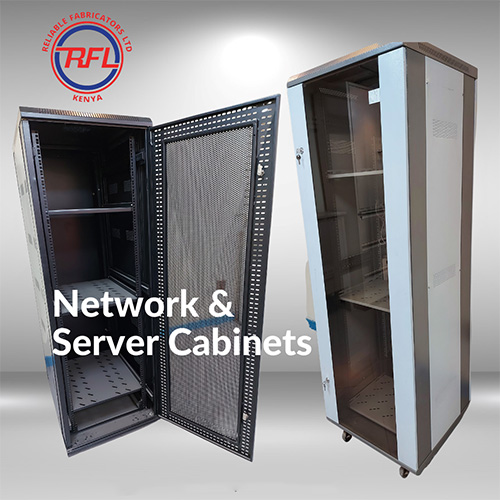
The Importance of a Network Cabinet
In today’s interconnected world, a strong and reliable network is essential for businesses to thrive. Behind the scenes, a network cabinet plays a crucial role in maintaining the smooth operation of your digital infrastructure. From organizing cables to providing security and optimizing performance, a network cabinet is the backbone of your network. In this blog post, we’ll explore the significance of a network cabinet and why it is a vital component for businesses seeking efficient and secure connectivity.
Organization and Efficiency:
A network cabinet is like a control center for your networking equipment. It offers a centralized location to house your switches, routers, servers, and other critical networking devices. By keeping everything organized in one place, it simplifies cable management, reducing the risk of tangled wires and minimizing troubleshooting time. With a well-organized network cabinet, technicians can quickly identify and resolve any connectivity issues, saving valuable time and improving overall efficiency.
Security and Protection:
Protecting your networking equipment is of utmost importance. A network cabinet provides a secure environment for your devices, safeguarding them from physical damage, unauthorized access, and environmental hazards. Many network cabinets come with lockable doors and other security features, ensuring that only authorized personnel can access the equipment. Additionally, network cabinets often offer temperature control and ventilation, preventing overheating and prolonging the lifespan of your devices.
Scalability and Future-Readiness:
As businesses grow, so does their networking infrastructure. A network cabinet is designed to accommodate expansion and future technological advancements. With adjustable racks and mounting options, it can easily accommodate additional equipment or upgrades. This scalability ensures that your network can adapt to changing needs without requiring significant infrastructure changes, saving both time and resources in the long run.
Improved Performance and Reliability:
A well-designed network cabinet promotes optimal performance and reliability of your network. It provides proper cable management, reducing signal interference and enhancing data transfer speeds. Additionally, network cabinets often include features like cable management panels, power distribution units (PDUs), and cooling systems, all of which contribute to maintaining a stable and efficient network environment. By minimizing downtime and ensuring consistent connectivity, a network cabinet helps businesses operate smoothly and deliver uninterrupted services to their customers.
Streamlined Maintenance and Troubleshooting:
Network cabinets simplify maintenance and troubleshooting tasks. With neatly organized cables and easy access to equipment, technicians can quickly identify and rectify issues, minimizing disruption to the network. Efficient cable management reduces the chances of accidental cable disconnections and makes it easier to trace and replace faulty cables. This streamlined maintenance process allows businesses to resolve issues promptly, reducing downtime and maintaining productivity.


